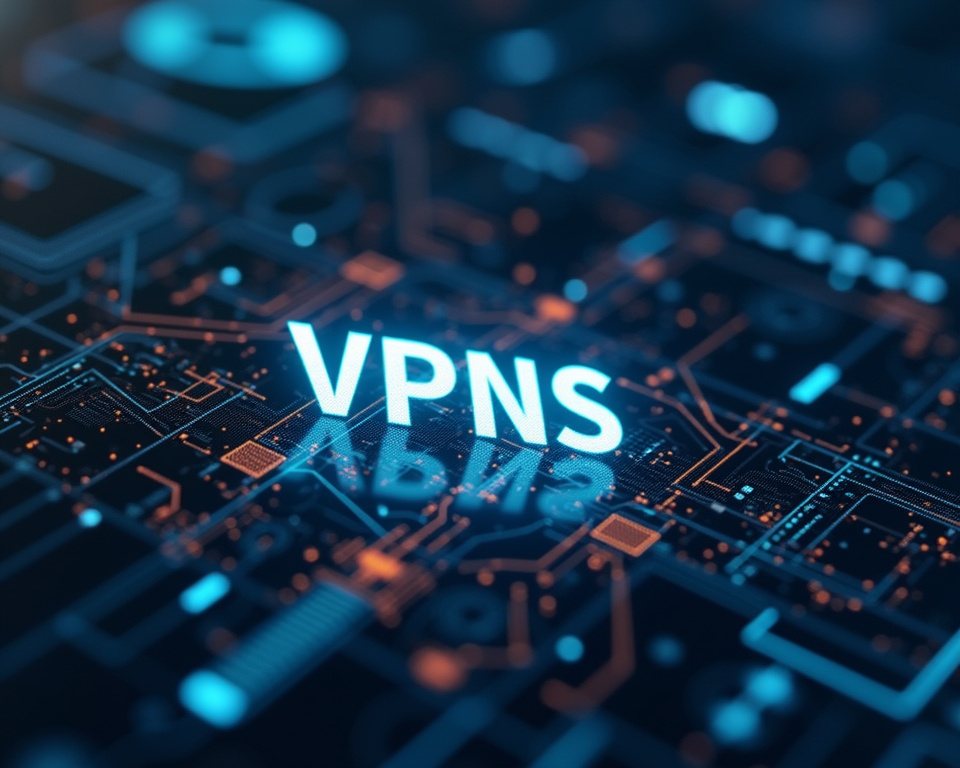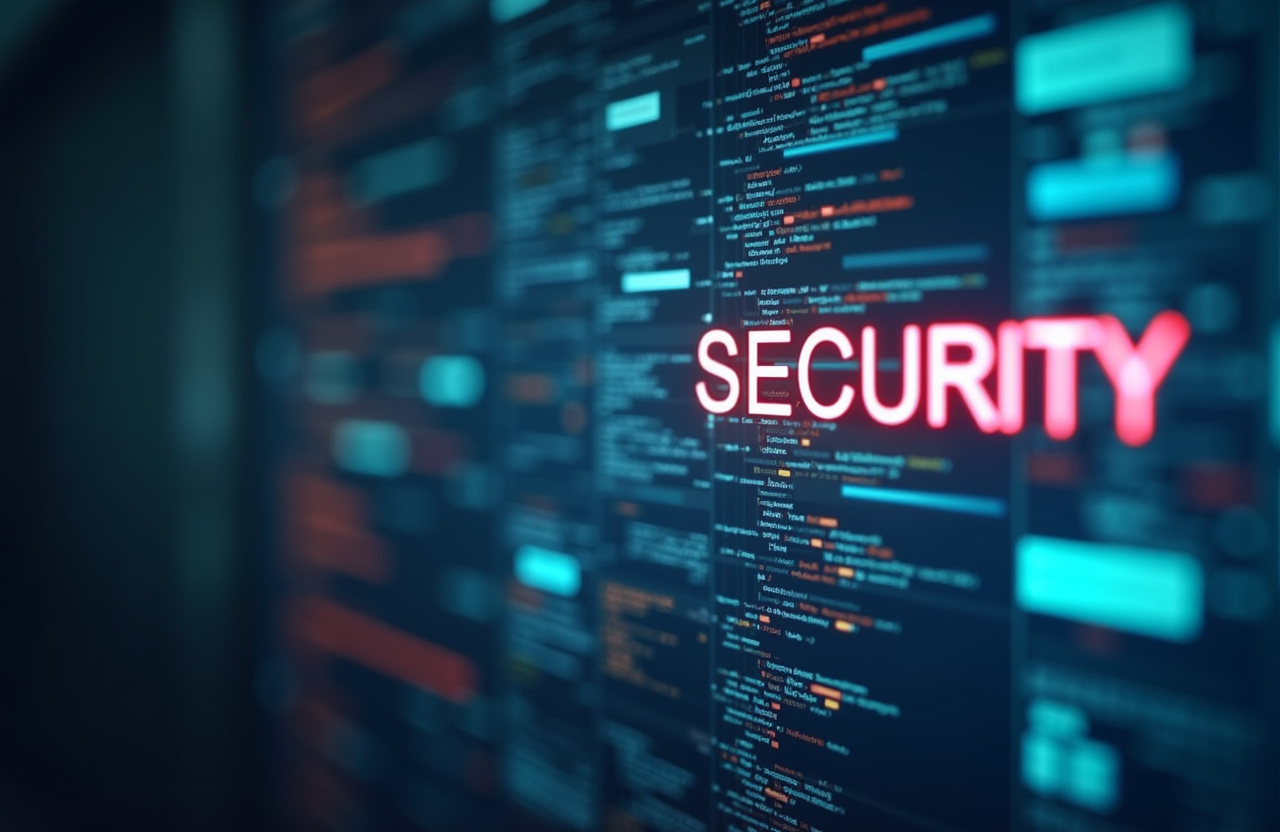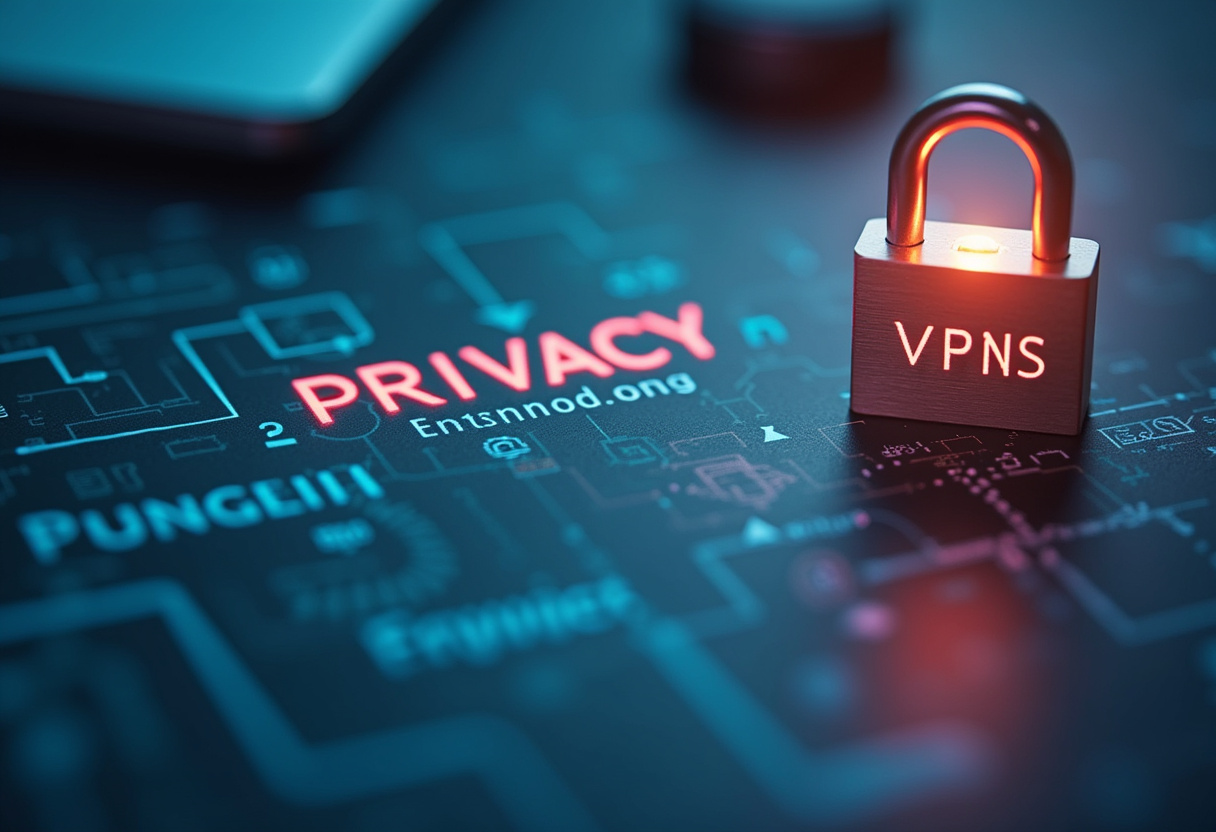VPNs for Aerospace Engineering: Protecting Design Data

Table of Contents
Securing Aerospace Engineering Data with VPNs
The aerospace industry, a realm synonymous with groundbreaking innovation and technological marvel, constantly pushes the boundaries of flight, space exploration, and defense systems. At the heart of this relentless pursuit of progress lies a vast and intricate web of design data. This data, encompassing everything from detailed schematics of aircraft wings to complex algorithms governing flight control systems, represents the intellectual capital and competitive advantage of aerospace engineering firms.
However, this invaluable data is also a prime target for malicious actors, ranging from rival companies seeking to steal trade secrets to nation-state entities engaged in espionage. A successful breach can result in devastating consequences, including financial losses, reputational damage, compromised national security, and even potential safety hazards stemming from manipulated designs. Recognizing the criticality of safeguarding this sensitive information, aerospace engineering firms are increasingly turning to Virtual Private Networks (VPNs) as a cornerstone of their cybersecurity strategy.
This article delves into the vital role VPNs play in protecting design data within the aerospace engineering sector, exploring how they ensure confidentiality, maintain project integrity, and facilitate secure collaboration in a highly interconnected and vulnerable digital landscape. A VPN, in its simplest form, functions as a secure and encrypted tunnel for data transmission across public networks like the Internet. This tunnel effectively shields sensitive information from unauthorized access by encrypting all data passing through it, making it unreadable to intercepting parties.
For aerospace engineering, this encryption is critical during various stages, including the initial design phase, collaborative reviews, simulation runs, and the final data transfer to manufacturing and deployment. The ‘aerospace engineering VPN’ isn’t just about encryption; it offers a multi-layered approach to security. By masking the user's IP address and routing traffic through a VPN server located in a different geographical location, it adds a layer of anonymity.
This makes tracking and identifying the source of data traffic significantly more difficult, hindering potential attackers attempting to pinpoint specific engineers or project teams working on sensitive projects. This obfuscation is particularly valuable in an industry that often faces sophisticated cyberattacks designed to steal intellectual property or disrupt operations. The benefits extend beyond simple data protection to enabling secure access to globally distributed resources.
Aerospace engineering projects often involve collaboration between teams located in different countries, access to specialized databases hosted on foreign servers, and participation in international research initiatives. A VPN can provide a secure gateway to these geographically restricted resources, allowing authorized personnel to access critical information without exposing themselves or the company's network to unnecessary risks. This secure connectivity is essential for seamless collaboration and for maintaining a competitive edge in the global aerospace market.
However, the implementation of an ‘aerospace engineering VPN’ is not a plug-and-play solution. It requires a comprehensive and well-defined security policy, coupled with rigorous user training and continuous monitoring. The security policy should clearly outline acceptable use guidelines, data handling procedures, password management protocols, and incident response plans.
Employees who handle sensitive design data must receive thorough training on VPN usage, potential security threats, and the importance of adhering to security protocols. Regular security audits and penetration testing are crucial for identifying vulnerabilities in the VPN infrastructure and ensuring its continued effectiveness. This proactive approach to ‘design data security’ ensures that the VPN remains a robust defense against constantly evolving cyber threats.
Selecting the right VPN solution requires careful consideration. Many options flood the market, but not all provide the robust security and reliability demanded by the aerospace industry. Essential features to consider include strong encryption protocols, a wide range of secure server locations, a strict no-logs policy guaranteeing user anonymity, and a kill switch function that automatically disconnects the internet connection if the VPN connection drops, preventing data leakage.
Furthermore, evaluating the vendor's reputation, security certifications, and compliance with relevant data privacy regulations is crucial for ensuring the chosen VPN aligns with the company's security posture and legal obligations. The ideal VPN should provide a seamless and secure user experience without compromising network performance or hindering productivity.
Enhancing Project Data Protection with VPNs
The repercussions of a compromised ‘design data security’ posture within the aerospace engineering domain are severe and multifaceted, extending far beyond mere financial losses. Imagine a scenario where a malicious actor successfully breaches the security perimeter and gains unauthorized access to the design schematics of a cutting-edge, next-generation aircraft. Such a breach could unleash a cascade of detrimental consequences.
First and foremost, it would provide competitors with an invaluable advantage, enabling them to reverse-engineer key technologies and accelerate the development of competing products. This could significantly erode the market share and profitability of the aerospace engineering firm that suffered the breach. Furthermore, the stolen design data could be exploited to identify vulnerabilities in the aircraft, potentially leading to catastrophic failures or even deliberate acts of sabotage.
This not only poses a serious threat to public safety but also exposes the firm to significant legal liabilities and reputational damage. In the realm of military aerospace, the stakes are even higher. Envision a situation where an adversary gains access to the intricate design specifications of a state-of-the-art stealth fighter jet or a sophisticated missile defense system.
Such a compromise could have profound implications for national security. The adversary could leverage this stolen information to develop countermeasures capable of neutralizing the effectiveness of the compromised system, thereby diminishing its strategic value. Moreover, they could identify and exploit weaknesses in the system to gain a tactical advantage in future conflicts.
The economic ramifications of such a security breach would be immense, potentially costing billions of dollars in lost defense contracts, research and development investments, and the implementation of remedial security measures. Beyond the tangible losses of intellectual property and competitive edges, a data breach can also severely damage public trust and confidence in the aerospace industry. Passengers and cargo operators alike rely on the safety and reliability of aircraft.
Any perception that design data has been compromised, raising doubts about the integrity of the aircraft's engineering, can have a devastating impact on sales, air travel, and the overall reputation of the aerospace industry. Recovering from such reputational damage can be a long and arduous process, requiring significant investments in public relations and quality assurance. Therefore, aerospace engineering firms must adopt a proactive and comprehensive approach to safeguard their design data.
This is not merely about protecting their own financial interests; it is about upholding the integrity of the entire industry and ensuring the safety and security of the general public. The implementation of an ‘aerospace engineering VPN’ is not simply a technical solution; it represents a fundamental commitment to security and responsible data handling. It signifies a recognition of the risks involved and a willingness to invest in the necessary safeguards to mitigate those risks.
In addition to the direct security benefits, a VPN can also play a crucial role in ensuring regulatory compliance. The aerospace industry is subject to a complex web of regulations concerning data security and privacy, such as the International Traffic in Arms Regulations (ITAR) regulations in the United States, governing the export and import of defense-related technologies and information, and the General Data Protection Regulation (GDPR) in Europe, which mandates strict data protection standards for personal information. These regulations require aerospace engineering firms to implement appropriate security measures to protect sensitive data from unauthorized access, disclosure, or loss.
A VPN helps companies meet these regulatory demands by creating a secure and encrypted channel for data transmission, keeping sensitive information confidential and shielded from interception, therefore upholding data ‘confidentiality protection’. However, implementing a VPN is merely one piece of the puzzle; it must be accompanied by clear policies and procedures for VPN usage, encompassing guidelines for data access, authentication, and comprehensive logging. Employees must be thoroughly trained on these policies and procedures, and their adherence must be regularly monitored and enforced.
Regular audits and assessments are essential to ensure the VPN's ongoing effectiveness and to identify and address any potential vulnerabilities.
VPNs for Secure Communication
‘Confidentiality protection’ is paramount in aerospace engineering, requiring a multi-faceted approach where a VPN serves as a critical component. A VPN inherently provides a secure and encrypted channel for data transmission, effectively preventing unauthorized access to sensitive information as it traverses the internet. By encrypting data, a VPN converts it into an unreadable format, rendering it useless to potential eavesdroppers even if they manage to intercept the transmission.
This is absolutely essential for protecting sensitive design data, which often includes proprietary algorithms, technical specifications, and classified information, from falling into the wrong hands. The encryption process typically involves the use of strong cryptographic protocols, such as Advanced Encryption Standard (AES) with a 256-bit key, which are considered virtually unbreakable by modern computing standards. This ensures that even the most determined attackers would find it extremely difficult, if not impossible, to decrypt the data and access its contents.
Furthermore, a VPN hides the user's IP address, effectively masking their location and identity. This makes it significantly harder for attackers to track the source and destination of data traffic, hindering their ability to target specific individuals or teams involved in sensitive projects. The combination of encryption and IP address masking provides a powerful layer of anonymity, making it substantially more difficult for malicious actors to compromise the confidentiality of design data.
This is particularly important in an industry where intellectual property is constantly under threat and where nation-state actors are known to engage in industrial espionage. Maintaining this level of ‘confidentiality protection’ requires a continuous commitment from an organization and IT staff. Beyond securing data in transit, a VPN can also facilitate secure remote access to corporate networks and resources.
Aerospace engineers often need to access sensitive design data from remote locations, whether they are working from home, traveling for business, or collaborating with partners in other countries. A VPN allows them to establish a secure and encrypted connection to the corporate network, ensuring that their data remains protected even when they are working outside the confines of the office. This is particularly crucial in today's increasingly distributed work environment, where remote collaboration is becoming the norm.
By providing secure remote access, a VPN enables aerospace engineering firms to maintain productivity and efficiency without compromising the confidentiality of their design data. Moreover, utilizing a ‘VPN for technology’ also ensures the ‘project integrity’ by preventing data tampering. The encrypted tunnel established by a VPN not only protects the confidentiality of data but also ensures its integrity.
Any attempt to tamper with the data during transmission would be immediately detectable, as it would disrupt the encryption and render the data unreadable. This provides a valuable safeguard against man-in-the-middle attacks, where an attacker intercepts data and attempts to modify it before forwarding it to its intended recipient. By ensuring data integrity, a VPN helps to prevent unauthorized alterations to design data, which could have catastrophic consequences in the aerospace industry.
To maximize the confidentiality benefits of a VPN, aerospace engineering firms should implement several best practices. These include using strong passwords, enabling multi-factor authentication, regularly updating VPN software, and educating employees about phishing scams and other social engineering attacks. It is also important to choose a VPN provider that has a strong reputation for security and privacy and that adheres to a strict no-logs policy.
By following these best practices, aerospace engineering firms can significantly enhance their ‘confidentiality protection’ and reduce the risk of data breaches. This layered approach to security is critical for protecting sensitive design data in the face of evolving cyber threats. The selection of a VPN should involve a detailed risk assessment and a clear understanding of the specific security requirements of the organization.
VPNs for Services
Upholding ‘project integrity’ is an absolute imperative within the demanding landscape of aerospace engineering. Any compromise to the integrity of design data, whether intentional or accidental, can have far-reaching and potentially catastrophic consequences, impacting not only the financial viability of a project but also the safety and reliability of the final product. Consider, for instance, a scenario where an unauthorized individual or a malicious software program subtly alters the design specifications of a critical aircraft component.
Even a seemingly minor modification could introduce unforeseen vulnerabilities, leading to structural failures, performance degradation, or even catastrophic accidents during flight. Similarly, if simulation data is corrupted or tampered with, it could lead to inaccurate performance predictions, resulting in flawed designs that fail to meet safety standards. The potential for data corruption or manipulation is particularly concerning in the context of collaborative projects, where multiple teams and individuals may be working on different aspects of the design simultaneously located across multiple geographical locations.
Without robust security measures in place, it can be difficult to track changes, verify data integrity, and prevent unauthorized modifications. This is where a VPN, combined with other security controls, plays a crucial role in maintaining ‘project integrity’ throughout the entire design lifecycle. A VPN helps ensure that design data is protected from unauthorized access and modification, both in transit and at rest.
The encrypted tunnel created by the VPN prevents eavesdropping and data interception, while access control mechanisms restrict access to sensitive data only to authorized personnel. This minimizes the risk of both malicious attacks and accidental data breaches, thereby safeguarding the integrity of the design data. Moreover, a VPN can facilitate secure and reliable data transfers between different teams and locations.
Aerospace engineering projects often involve the exchange of large files containing complex design data. Without a secure channel, these data transfers are vulnerable to interception, corruption, or even data loss. A VPN ensures that data is transmitted securely and reliably, minimizing the risk of data corruption or loss during transfer.
This is particularly important for projects that involve geographically distributed teams, as it allows them to collaborate effectively without compromising data integrity. Further enhancing ‘project integrity’ can be achieved by investing in specialized software specifically designed for the aerospace engineering sector, such as those with built-in version control and change tracking features, which provide an audit trail of all modifications made to the design data. To further strengthen ‘project integrity’, aerospace engineering firms should implement robust data backup and recovery procedures.
Regular backups of design data should be stored in secure locations, both on-site and off-site, to protect against data loss due to hardware failures, natural disasters, or cyberattacks. Recovery procedures should be regularly tested to ensure that data can be quickly and reliably restored in the event of a disruption. Incorporating a VPN into the workflow should be seamless and transparent to the end users, minimizing any disruption to their productivity.
This can be achieved by providing clear instructions on VPN usage, offering ongoing technical support, selecting user-friendly VPN software and choosing a VPN provider that offers reliable performance and minimal downtime. Regularly updating the VPN software is essential to address any security vulnerabilities and ensure that the VPN remains effective against emerging threats. The ‘VPN for technology’ integration should be a continual process of improvement and adaptation.
Aerospace engineering firms should continuously monitor their security posture, assess emerging threats, and adapt their security measures accordingly. Regular security audits and penetration testing can help identify vulnerabilities and ensure that the VPN and other security controls remain effective. Fostering a culture of security awareness among employees is also crucial.
Employees should be trained on the importance of data integrity and the steps they can take to protect design data from unauthorized access, modification, or loss. By prioritizing ‘project integrity’ and adopting a proactive approach to security, aerospace engineering firms can minimize the risk of data breaches and ensure the success of their projects.
Integration of a ‘VPN for technology’ within aerospace engineering demands a holistic and strategic approach, moving beyond a simple software installation to encompass policy, training, and ongoing monitoring. The IT department stands as a crucial player in selecting, configuring, and diligently maintaining the VPN infrastructure. This involves ensuring seamless integration with existing network and security systems, guaranteeing compatibility with various operating systems and devices used by engineers, and configuring the VPN to prioritize performance without compromising security.
The selected VPN solution should offer robust encryption protocols, a wide array of secure server locations, strict adherence to a no-logs policy, and a kill switch feature ensuring automatic internet disconnection upon VPN connection failure, preempting any inadvertent data leakage. However, securing design data extends far beyond the IT department's responsibility. Every employee who handles sensitive aerospace engineering data must understand the inherent risks and proactively contribute to data protection.
This entails employing sturdy, complex passwords, remaining vigilant against phishing attempts and other social engineering tactics aimed at tricking users into divulging confidential information, and promptly reporting any suspicious activity to the designated IT security team. Regularly security awareness training sessions and workshops can significantly boost employees’ understanding of the risks, enhance their ability to identify potential threats, and solidify their commitment to following established security protocols. Solidifying that knowledge is a main key aspect to enhance and solidify the ‘VPN for technology’.
The establishment of clearly defined policies is crucial for guiding VPN usage and ensuring adherence to security best practices. These policies should explicitly outline acceptable VPN usage scenarios, encompassing permitted data access, authentication procedures, and detailed logging practices. Furthermore, the policies should address incident response protocols, detailing the steps employees should take in the event of a suspected security breach or data compromise.
Regular reviews and updates to these policies are essential to adapt to evolving threats and technological advancements. Enforcement of these policies through consistent monitoring and appropriate disciplinary actions is vital for fostering a culture of accountability and promoting adherence to security standards. As mentioned, this is the best path to ensure and increase the ‘confidentiality protection’.
Continuous monitoring and logging are extremely important for detecting and responding to security incidents. The VPN infrastructure should be configured to generate detailed logs of all user activity, including connection times, accessed resources, and data transfer volumes. These logs should be regularly reviewed and analyzed to identify anomalies or suspicious patterns that may indicate a security breach.
Automated security information and event management (SIEM) systems can expedite this process by analyzing log data in real-time and alerting security personnel to potential threats. Furthermore, regular penetration testing and vulnerability assessments can proactively identify weaknesses in the VPN infrastructure and other security controls, allowing those weaknesses to be addressed before they can be exploited by attackers. Effective communication and collaboration between the IT department, engineering teams, and senior management are indispensable for integrating a ‘VPN for technology’ effectively.
The IT department should work closely with engineering teams to understand their specific security needs and tailor the VPN configuration accordingly. Senior management should provide strong support for security initiatives, prioritizing security investments and fostering a culture of security awareness throughout the organization. Regularly scheduled meetings and feedback sessions can facilitate communication and collaboration and ensure that the security measures align with the evolving needs of the aerospace engineering firm.
Continuously evaluating emerging technologies and proactively adapting security measures are imperative for upholding the security and integrity of design data in the face of evolving cyber threats. In conclusion, implementing a robust ‘aerospace engineering VPN’ solution, when integrated with a comprehensive security strategy, is not merely a technical consideration but a fundamental imperative for safeguarding intellectual property, ensuring project integrity, and maintaining a competitive edge in the demanding aerospace industry. By prioritizing data security and fostering a culture of security awareness, aerospace engineering firms can mitigate the risks associated with cyber threats, protect their invaluable design data, and solidify their position as leaders in innovation and technological advancement.
Stay Updated
Get the latest VPN news, tips, and exclusive deals to your inbox.




